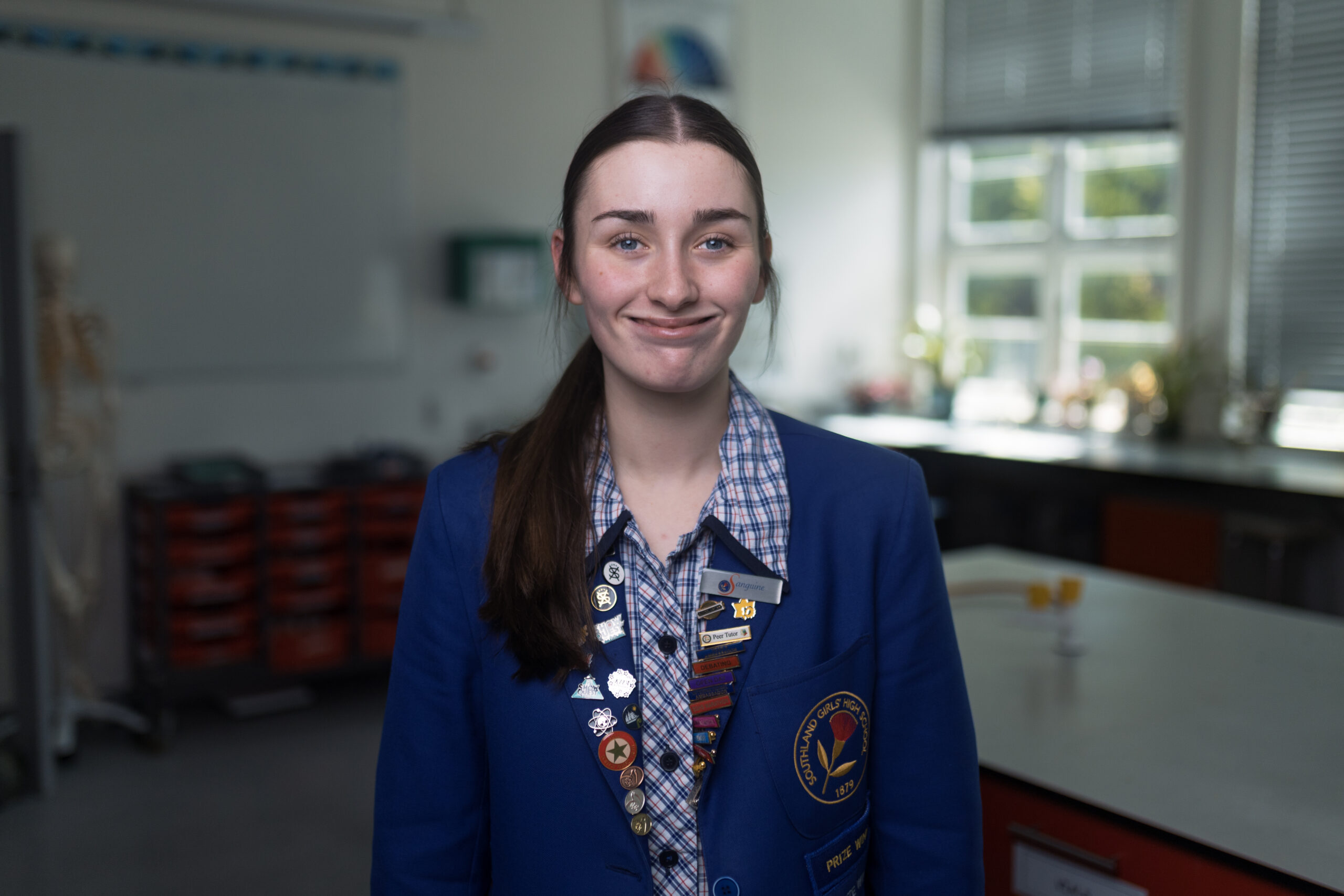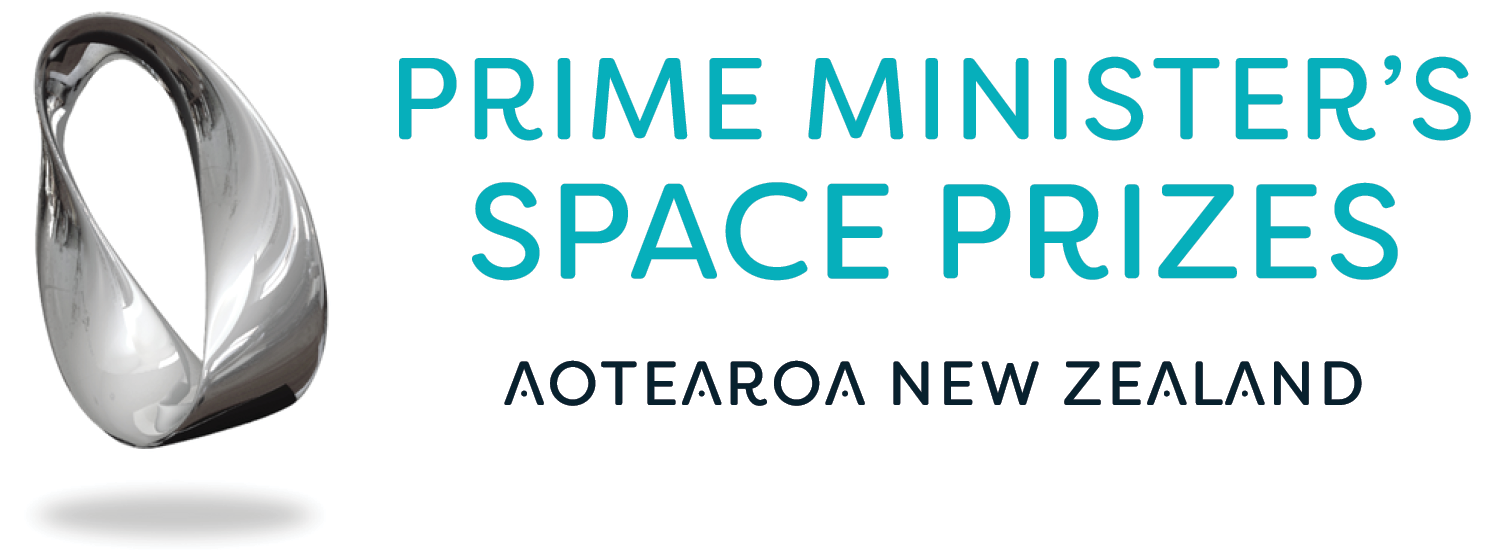2025 Prime Minister’s Space Prize for Student Endeavour

Wound healing in space wins student the Prime Minister’s Space Prize
Sophie Ineson, a Year 12 student from Southland Girls’ High School, has won the Prime Minister’s Space Prize for Student Endeavour, worth $50,000, for her project to design better wound care for space.
Researching a topic to enter into the NZAS Southland Science and Technology Fair, Sophie learned that wounds heal slower in space due to microgravity, which reduces the rate that tissues repair themselves, increasing the risk of infection.
“So even small cuts, like a papercut, can lead to a serious problem in space, due to reduced oxygen delivery to wounds, impaired immune systems, and slower cell regrowth,” Sophie said.
Sophie realised that managing wound care in long-duration space exploration was an important issue to solve with all the upcoming crewed space missions, including NASA’s Artemis missions to the Moon and later planned missions to Mars.
Sophie wanted to design a wound covering that could meet biological healing needs (non-irritating, regulate moisture, and maintain coverage to avoid infections) but be usable in the extreme conditions of space, such as being easy to apply in microgravity while wearing gloves, and be lightweight, durable, and biodegradable.
“Structural integrity is important – the dressing must stay intact even after days of contact with the wound fluids in microgravity, where surface tension causes pooling instead of drainage,” Sophie explained.
“After a lot of research, I came across my idea of using a jelly-like wound dressing that had wound-healing properties. It couldn’t be a normal Band-Aid that you use here on Earth. It had to be sustainable enough that it could last for a long period of time and not create a lot of waste, due to payload limits.”
After some trial and error with the formulation, Sophie created four hydrogel dressing prototypes.
One included chitosan for antibacterial strength and infection control, and another included Southland-sourced hemp seed oil and lecithin for anti-inflammatory effects and moisture retention.
Sophie tested these dressings on apple skin, which proved to be a good biological skin analogue.
She assessed adhesion, barrier function, and infection prevention, incubating samples for a period to see if bacteria grew. She also analysed the dressings under a microscope to understand the structure.
Sophie’s most successful prototype was a two-layer system of an outer shield and an inner wound-contact layer.
Sophie says that with more testing, she believes her product, called Hydro Heal, would be useful for space travel, particularly given the added risks from space dust.
“Regolith is a fine lunar dust which can pose serious challenges if it gets into wounds. So, I believe that my wound dressing can help combat that issue for astronauts.”
In awarding Sophie this prize, the judging panel was impressed by the methodology that Sophie developed and the amount of testing she did. “Overall, this is a well thought-out and independently carried-out project. It combines biomedical knowledge with engineering design and shows clear commitment. The work is a solid proof-of-concept with real potential for both space missions and healthcare on Earth,” the panel chair said.
Sophie says it was her grandmother who got her interested in space science.
“My nana lives on the coast near Dunedin and she encouraged me to watch the International Space Station pass right overhead when I visited. It kicked off the spark and led me to realise that not many people know about space.”
Her parents encouraged this burgeoning interest, taking Sophie to visit NASA as part of a family holiday in the United States of America.
“The technology I saw there was very eye-opening.”
When she was in Year 7, she won the Fair Go Consumer Heroes competition for her project about getting more women into space and she has gone on to win more competitions—and telescopes—for herself and her school. These include the Women in Space Aotearoa New Zealand competitions run by Space Up!, a club for high schoolers, and she has twice won the New Zealand Space Agency’s NASA Scientist for a Day essay competition.
Sophie said she was “overwhelmed with happiness” when she received the phone call telling her that she had won the student Prime Minister’s Space Prize.
“Now I can give back to my community through the innovateHer club I started and mentoring students in Southland to enter the science fair. I want to encourage the girls at my school to be involved in science, and make the people of Southland proud.”
“I want to thank the science department at Southland Girls’ High School and especially Mrs Goodwill. I chose to go to the school as a Year 7 student because I wanted to complete science badges and Mrs Goodwill and her team have given me so much support and encouragement for my science fair projects each year.”
“I think as New Zealanders, we can be really proud of what we are contributing to the space sector. For such a small country, we are doing amazing things for space.”
Sophie plans to go to university and study psychology and neuroscience.
“I want to look at the psychological and neurological factors that affect people in space. In the medical context, aspects like pain and discomfort from slow healing wounds would impact the ability of astronauts to perform missions by reducing morale and affecting overall crew performance.”
